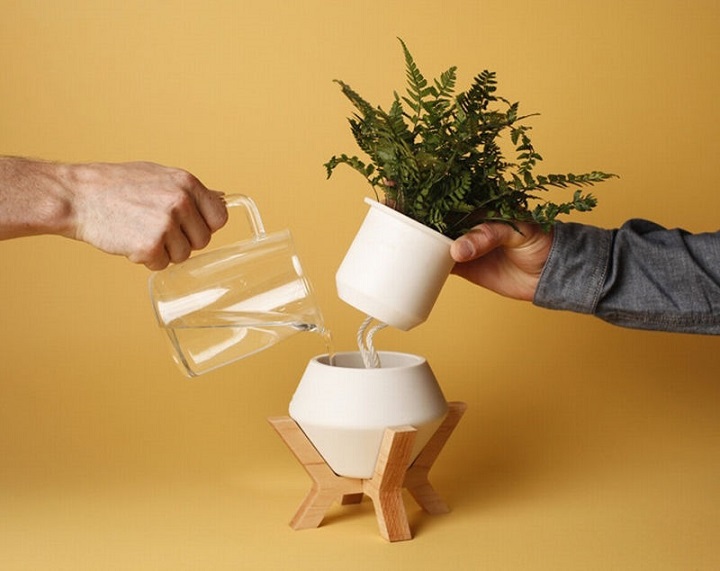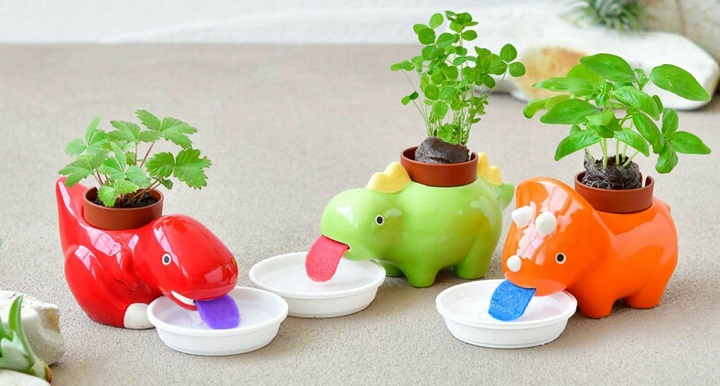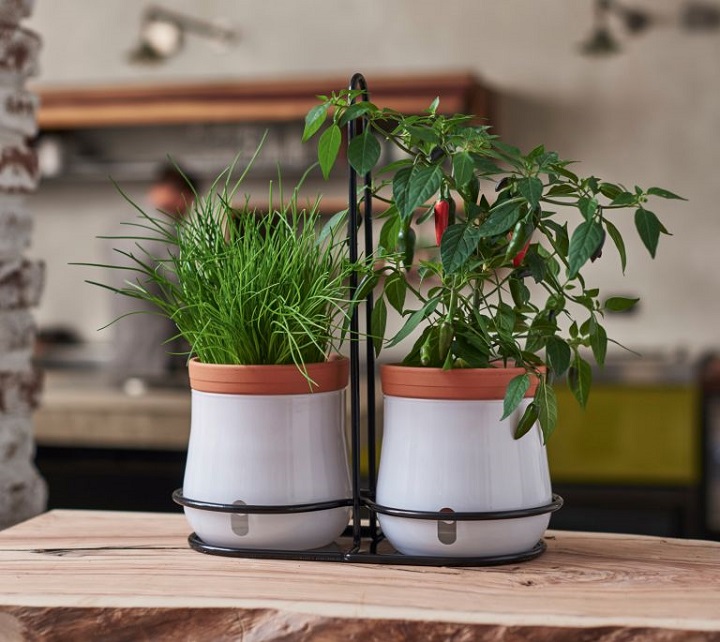Everything You Need To Know About Self Watering Pots
If you are someone who enjoys gardening and loves having flowering plants at home but lives in an urban area, you should become familiar with so-called self-watering planters – a revolutionary gardening system designed to suit urban environments.
This amazing invention will allow you to grow basically any kind of vegetable, fruit, herb and flower in your home, garden or on the balcony. No matter whether you use them indoors or outdoors, self-watering plant pots can breathe life into any urban space.
Self-watering planters are so popular and there are many reasons to love them. Here is everything you need to know about this amazing and revolutionary technology.
What Are Self Watering Pots?
Self watering plant pots or containers are not just any ordinary pots, but rather a smart watering system that includes a reservoir of water at the bottom. Self-watering containers offer an alternative way to water the plant. They are very effective and easy to maintain.
Giving your plants the water they need isn’t always convenient or possible, hence having a planter that waters the plant it holds is a fantastic solution while you are away or don’t have the time. The modern decorative self watering pots on the market keep your plants alive and healthy while beautifying your home.
There is a wide range of stylish self watering pots at competitive prices from quality brands. They are simple to construct using inexpensive, commonly available materials. The preferable choice is HDPE planters, but planter pots are available in a variety of other materials including wood, ceramic, and fibreglass.
Are self-watering pots good for indoor plants? Definitely! Self-water pots are the perfect solution for most indoor plants, including vegetables, tropical plants, annuals and perennials. Some indoor plants that like moist soil won’t benefit from a self-watering planter, though. For example, some semi-aquatic plants such as umbrella papyrus, spike moss or fibre-optic, may suffer as a result of using a self-watering planter, so you should avoid it and stick with traditional watering.

How Do They Work?
Humans are always trying to invent ways to make life easier, and self-watering planters do just that – they make growing any potted plant as low-effort as it can be.
Regardless of its size, a self watering pot consists of a growing bed, potting soil, water reservoir, and wicking system that puts the soil in contact with the water. The outer pot, also known as water storage tank, keeps the plant from drowning or experiencing root rot, while also providing additional nutrients for a few weeks.
Actually, the water in the bottom chamber is capable of continually feeding your plants. The wick connects the outer and inner pot so water can easily travel up to the plant’s root ball and nourish your plants.
Self water pots work through capillary action, or wicking. Using wicking action to provide water from the built-in reservoir, these pots and planters allow you to water your plants by simply topping up the reservoir rather than having to keep track of the moisture level of the soil and watering according to each plant’s particular needs.
The Advantages
Self-watering pots offer many benefits, including, among others, convenience, water efficiency and improved plant health.
Convenience
Perhaps the biggest advantage of self watering planters is that they are convenient by simply making sure there is always water available for the plant’s roots to feed on. Watering your plants can be quite a time-consuming task, especially if you own a lot of plants. Plus, different plants have different watering needs. Self watering pots offer a consistent supply of water; they offer plants water just as much and when they need it. The water is delivered from the reservoir at the same rate that the plants are using it, hence keeping the soil constantly moist.
Self watering planters are a great solution for busy people who don’t have time to attend to their plants properly. These pots and containers offer the convenience of being able to water your lovely mini garden while you are not at home.

Water Efficiency
Water efficiency is another major advantage of using self water pots. While direct watering from above will only evaporate some of the water from the soil, these containers mainly draw water from below the surface, resulting in less moisture of the soil and hence nearly all of the water is used by the plants. With self watering pots, there are considerably lower watering amounts due to evaporation while still retaining a healthy environment for growing any kind of plants.
Improved Plant Health
Another benefit of using self watering containers is raising healthier plants that live longer. While over-watering can starve the plant of oxygen and lead to fungal diseases, under-watering deprives plants of the water they need to grow. With self-watering planters, the plants will get just the amount of water they need to thrive and hence will last longer. In addition, these pots encourage healthy root growth. The water flows to the bottom reservoir which stimulates roots to grow deep to find the moisture supply.




![AFX Sauber F1 C44 Stake No24 Slot Car [22092]](https://www.availableonline.com.au/wp-content/uploads/2025/06/6ccd9e30-c6fa-4910-9081-5fcc3ba80b04__60843-520x245.jpg)




